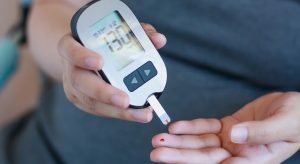The Changing Landscape of Cardiology
Cardiology is witnessing a monumental transformation in 2025. Gone are the days when open-heart surgeries were the only viable option. Today, thanks to groundbreaking medical technologies and advanced procedures, many interventions have become minimally invasive, reducing both recovery time and patient discomfort. AI-powered diagnostics and personalized treatment protocols are reshaping how heart conditions are detected and managed. At the forefront of this transformation are progressive healthcare centers like Spashta Healthcare in Bengaluru, where cutting-edge cardiology meets compassionate, patient-centered care.
Artificial Intelligence in Cardiology – Early Detection Gets Smarter
Artificial Intelligence (AI) is revolutionizing cardiac diagnostics. From analyzing ECGs and echocardiograms to intravascular images and angiograms, AI algorithms now assist cardiologists in making faster and more accurate decisions. AI-powered platforms help detect subtle signs of heart disease, improving early intervention. Predictive analytics based on risk scores can now estimate an individual’s probability of developing heart conditions, allowing preventive care strategies to be deployed before symptoms even surface.
Spashta Healthcare incorporates AI-backed diagnostic support tools into its practice to ensure timely and precise diagnoses for every patient. By leveraging smart technology, cardiologists can now offer more accurate treatment plans tailored to each patient’s heart health profile.
Minimally Invasive and Robotic Heart Procedures
One of the most significant advancements in recent years is the rise of minimally invasive and robotic-assisted cardiac procedures.
- TAVR/TAVI (Transcatheter Aortic Valve Replacement/Implantation): A game-changing procedure, TAVR allows for the replacement of a diseased aortic valve via a catheter inserted through the groin—without the need for open-heart surgery.
- TMVR (Transcatheter Mitral Valve Replacement): An innovative option for patients who are not eligible for surgery, TMVR replaces the mitral valve through a catheter-based approach.
- Leadless Pacemakers: The newest generation of pacemakers are capsule-sized and can be implanted directly into the heart without external wires or bulky battery units. This technology significantly reduces the risk of infection and improves patient comfort.
These next-gen procedures, available at select centers like Spashta Healthcare, offer patients reduced hospital stays, faster recovery, and fewer complications.
Wearables and Remote Monitoring: Empowering the Patient
Wearable health technology has emerged as a critical component of proactive cardiac care. Devices like smartwatches and biosensors now monitor heart rate, rhythm, and even detect irregularities such as atrial fibrillation in real-time. These wearables not only alert patients but also share data with their healthcare providers, enabling timely interventions.
Spashta Healthcare encourages patients to integrate wearable devices into their daily routines as part of a holistic approach to heart health. Through remote monitoring systems, clinicians can maintain regular oversight of high-risk patients, adjusting treatment as needed—without the need for frequent clinic visits.
What This Means for Patients in Bengaluru
For residents of Bengaluru, especially in areas like Bannerghatta and BTM Layout, accessing world-class cardiology care is no longer a distant dream. Spashta Healthcare is committed to bringing these next-gen cardiac solutions closer to home. With in-house expertise led by experienced cardiologists at Spashta Healthcare, patients can now consult for second opinions, advanced diagnostics, and minimally invasive treatments without the need for tertiary hospital referrals.
As healthcare becomes more personalized, data-driven, and patient-focused, Spashta Healthcare stands as a beacon of modern heart care. Whether you’re managing existing heart conditions or looking to take proactive steps toward prevention, the future of cardiology is here—and it’s accessible, advanced, and just around the corner.



